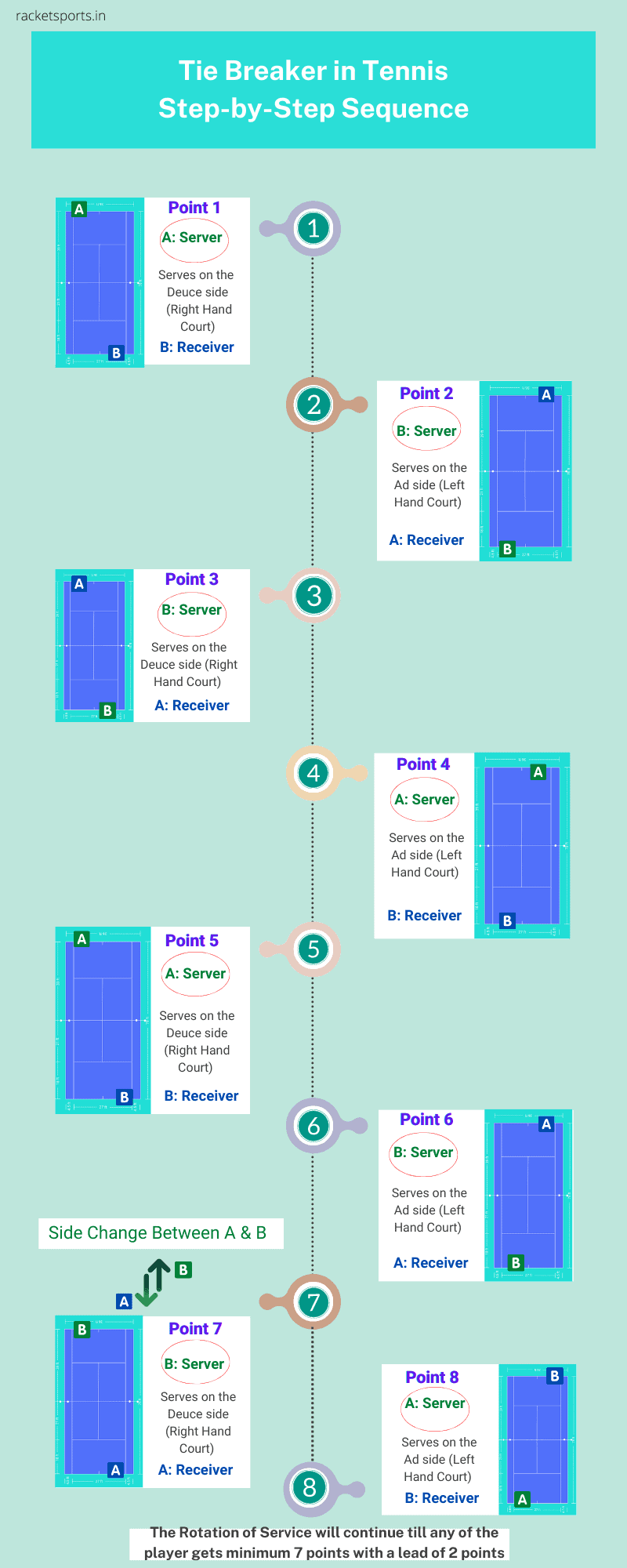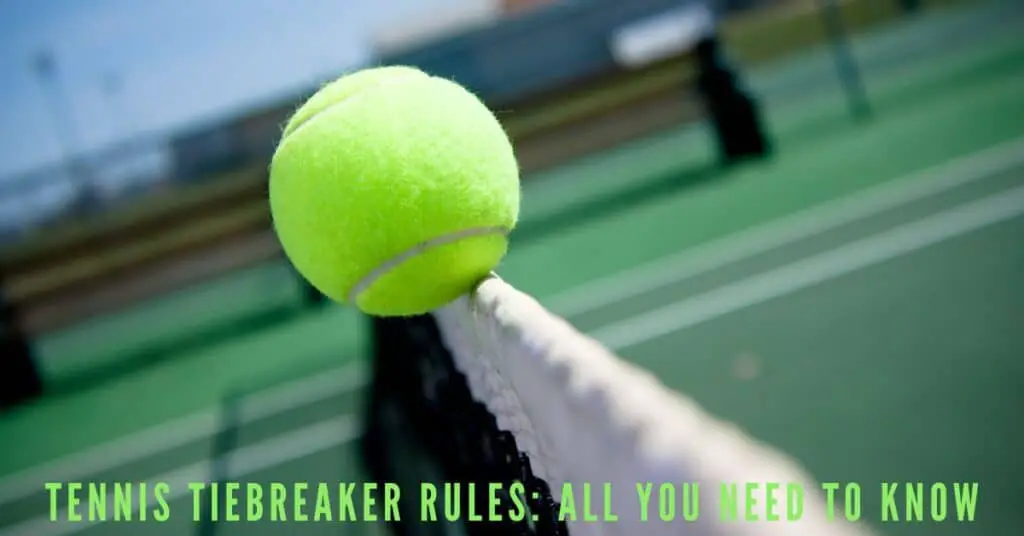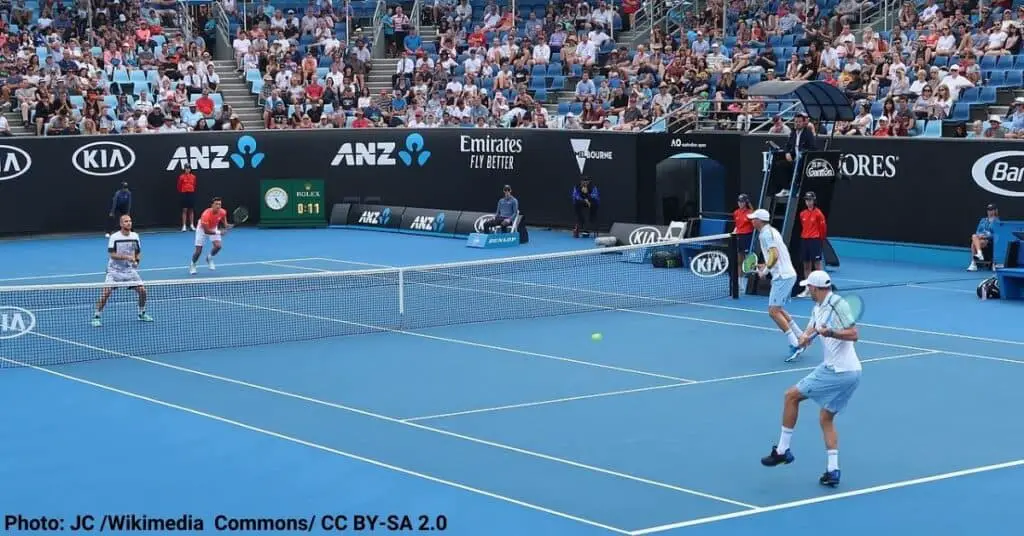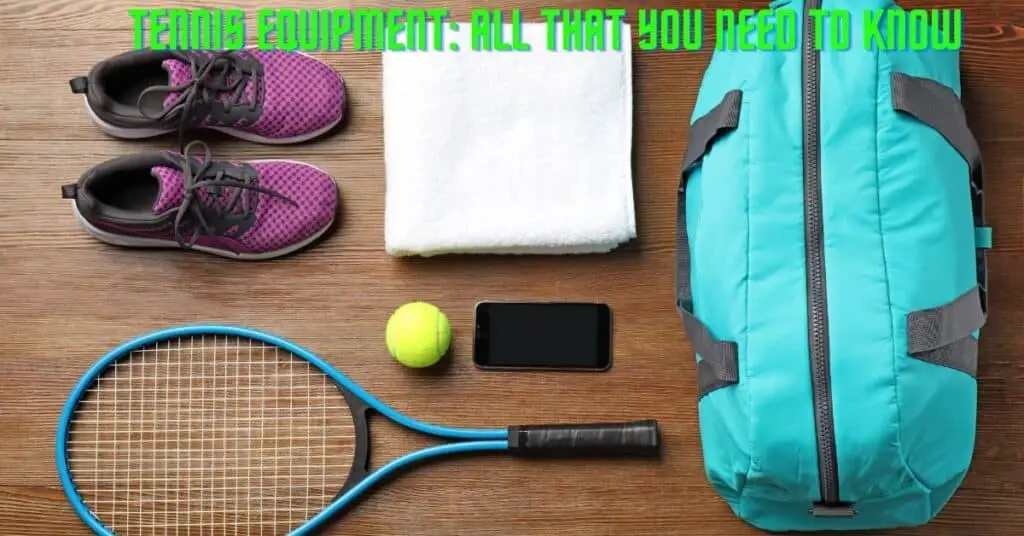The tennis tiebreaker is induced to end equality in a set. In tennis, when a set is tied at 6-6, the tiebreaker comes into action with some predefined rules to decide who wins the set at a score of 7-6. The tiebreaker continues till any of the players or team gets a lead of 2 points with a minimum of 7 points in total (In a 7-point or 12-point tiebreak system). The final score of 7-6 (7-2) shows that the winner of the set overpowers his opponent by 7 points to 2 in the tiebreaker.
How Does a Tiebreaker Work in Tennis?

In a tennis match, when both players arrive at an equality of 6-6, the tiebreaker starts. The last receiver who is due to serve starts the tiebreaker for the 1st point by serving from the deuce side of the court.
Let us assume two players A and B are involved in a tiebreaker with a set score of 6-6 where B serves for the last or 12th point. The sequence of points in the tiebreaker will be as follows.
- A → Serves on the Deuce side of the court
- B → Next Serve on the Ad side
- B → Next Serve on the Deuce side
- A → Next Serve on the Ad side
- A → Next Serve on the Deuce side
- B → Next Serve on the Ad side
Players A & B change ends
- B → Next Serve on the Deuce side
- A → Next serve on the Ad side
The sequence of serving will continue until any of the players reaches a minimum of 7 points with a point differential of ≥2 than the other. The results of tiebreakers may be like 7-2, 7-5, 8-6, 10-8, or 15-13.
When Do Players Change End in a Tiebreaker?
Players remain at the same end of a tennis court up to the 6th point, they only alter their ends after the 6th point is delivered. In the previous example, B serves for the 7th point just opposite the end from where he has served for the 6th point.
If the tiebreaker goes longer, players again change the ends at a multiple of 6 points, like 12, 18, and so on.
Tennis Tiebreaker Rules for Doubles
In doubles, a 12-point tiebreaker (also referred to as a 7-point tiebreak system) is almost the same as in singles, though the sequence of serves is a bit more complicated. Let’s suppose team A (pairing A1 & A2) and team B (pairing B1 & B2) are involved in a 7-point tiebreaker after the set is tied at 6-6 in a tennis match where B2 of team B has got the opportunity to serve the last one, i.e. the 12th point.
Now A1 of team A gets the chance to serve in the opening point of the tiebreaker. So the sequence of serves will be as follows.
- A1 → Serves on the Deuce side of the court
- B1 → Next Serve on the Ad side
- B1 → Next Serve on the Deuce side
- A2 → Next Serve on the Ad side
- A2 → Next Serve on the Deuce side
- B2 → Next Serve on the Ad side
Team A & Team B change ends
- B2 → Next Serve on the Deuce side
- A1 → Next Serve on the Ad side
- A1 → Next Serve on the Deuce side
This sequence of rotation of serve continues till any team wins the tiebreaker with a margin of 2 points.
What is a 10-point Tiebreaker in Tennis?
A 10-point tiebreaker takes place in the final set when it is tied at 6-6. All four Grand Slam organizers have agreed to use the 10-point tiebreaker from 2022 on an experiential basis.
The rules for the 10-point tiebreak system are almost the same as the regular 7-point tiebreakers, the only difference is in the scoring pattern where a player has to get a minimum of 10 points with a 2-point lead.
Since 2006, the 10-point tiebreaker, also known as a super tiebreaker, has been widely used in ATP and WTA doubles events. When a doubles match is tied at 1-1, the super tiebreaker comes in lieu of the decider set. The team wins at a margin of 2 points with a minimum total of 10 points, wins the tiebreak, and eventually wins the match.
Suggested Topic:




